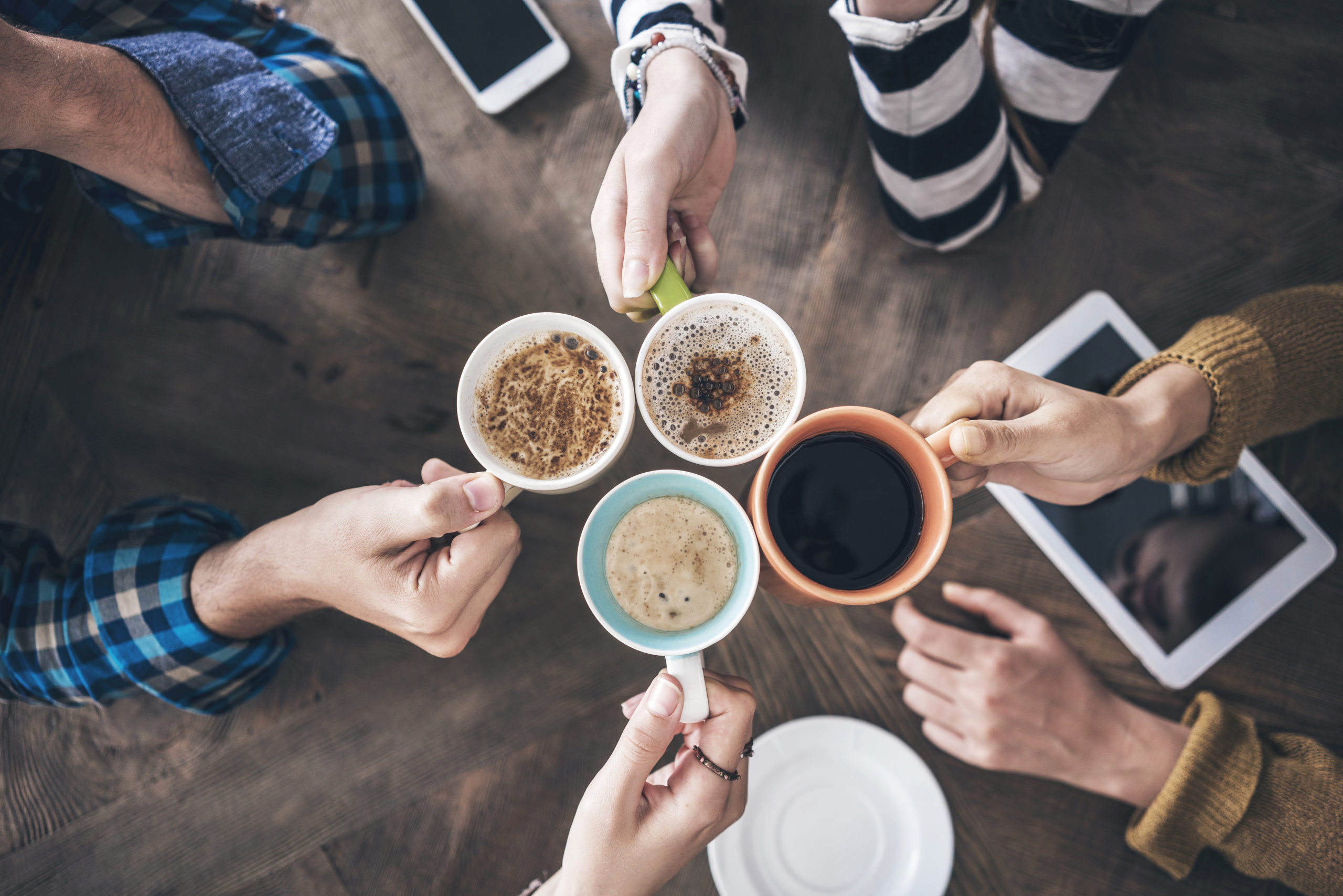Morning Report — Not Your Typical Medical Newsletter
We get it, you see a lot of medical newsletters, so hear us out. Twice a month, we’ll highlight important medical news sprinkled with witty commentary, fun facts, giveaways, and more… because learning should be fun! Subscribe to receive the Morning Report directly.
Do Clothes Make the Clinician?

You may not think much about your clinical attire, but it turns out that patients do—at least subconsciously. In a survey, 487 adults rated stock images of male and female clinicians according to experience and professionalism.
It looks like white coats are “in”
- Individuals wearing white coats were seen as significantly more experienced and professional than those wearing fleece or softshell jackets
- A white coat with scrubs was most preferred for surgeons; a white coat with business attire underneath was preferred for family physicians and dermatologists
But, you ask, with September almost upon us, can we still wear white coats after Labor Day? We polled everyone’s great-grandmothers, and they reluctantly confirmed that, yes, it’s okay.
Disappointingly, regardless of outerwear, female models wearing business attire underneath were seen as less professional than male counterparts.
We have a lot to unpack here regarding gender bias and equating attire with clinical stature. Hopefully, these findings will lead to interventions that help mitigate career disadvantages for women in healthcare and prevent professional role confusion in general.
Flavonoids—the Fountain of Youth?

As surely as we know that Rick Astley is never gonna give you up and never gonna let you down, we know that flavonoids are good for us. Research has shown that these antioxidant-rich compounds help protect against cardiovascular disease, diabetes, obesity, and some cancers. But can they also reduce oxidative stress in the brain and help prevent cognitive decline?
A prospective study totaling more than 75,000 people from both the Nurses’ Health Study and the Health Professionals Follow-up Study examined the association between dietary flavonoid consumption and subjective cognitive decline. Here’s the study link. Don’t be afraid to click it—we resisted the urge to Rickroll you.
After 20 years of follow-up, participants completed dietary questionnaires. Twice during the study, participants (most of whom began the study in their 50s) evaluated their own cognitive decline. The results:
- Those who consumed the most flavonoids (600 mg) had 20% less risk of self-reported cognitive decline than those who consumed the least (150 mg)
- Flavones (a class of flavonoids found mostly in yellow and orange fruits/vegetables) were associated with the highest relative risk reduction: 38%
- Anthocyanins (found primarily in berries) were next best: 24%
According to study author Dr. Walter Willett, “The people in our study who did the best over time ate an average of at least half a serving per day of foods like orange juice, oranges, peppers, celery, grapefruits, grapefruit juice, apples and pears.”
Could flavonoids be the fountain of youth? Probably not—only Phil Mickelson knows where that is. But they could give us a few more years of mental agility. Overall, these results are exciting in that they demonstrate how a few minor dietary changes may help prevent cognitive decline.
More Vitamin D, Fewer Opioids, in Palliative Cancer Care?

We are familiar with the unspoken rule of never discussing religion, politics, or vitamin D, but we’re mavericks here at Pri-Med, so here we go …
Researchers looked at the role vitamin D may play in reducing pain (and the need for opioids) in patients with vitamin D deficiency undergoing palliative cancer care. In this randomized placebo-controlled study, 244 patients were randomly assigned to 12 weeks of vitamin D treatment at 4,000 IU/day or placebo. At baseline and every four weeks of the study, opioid use was measured. Here are the notable findings:
- Patients treated with vitamin D had a significantly slower increase in opioid use than those in the placebo group (0.56 µg less fentanyl/hour per week)
- Those given vitamin D felt less fatigue than those in the placebo group
- No difference was seen in self-rated difference in self-rated quality of life or antibiotic use between the two groups
- The number needed to treat to decrease the opioid dose 12 µg fentanyl/hour is 12
Unfortunately, cancer deaths contributed to a high dropout rate (90 participants out of 244).
Overall, the results show that vitamin D correction is safe and may have positive effects on opioid use and fatigue in patients with cancer undergoing palliative care. Given that fatigue is notoriously hard to treat pharmacologically, vitamin D may offer some improvement for this patient population.
Medical Cartoon Caption Contest
We’re asking our readers to try their hand at cartoon caption writing. If you think you have an amusing caption for the following image, email Morning Report by Monday, August 23 with your idea. We’ll get the best Pri-Med minds in a room to vote on the winning caption, which will be featured in the next issue of Morning Report. Oh, and we’ll also send the winner a $50 Amazon gift card! We know we have some creative readers, so give it a go!

Reduce Waist Size While Unblocking Your Qi

Apparently, Tom Brady, Gisele Bündchen, and, over the centuries, many Chinese people have been onto something. Tai chi, the ancient martial art form turned low impact exercise, is rising in popularity in the United States and around the globe and giving yoga a run. While its gentle movements make it a great choice for all ages, can it really trim your waistline?
A single-site trial of 543 people aged 50 or older in China examined the effectiveness of one hour of tai chi three days per week in reducing waist circumference. Participants were randomly assigned to a no-exercise control group, an instructor-led exercise plus strength training group, or an instructor-led tai chi group.
Seventy-five percent of participants were overweight or obese at baseline, and all men had waistlines >35.4 inches, while all women were >31.5 inches. After 12 weeks, both the exercise and tai chi groups saw average waist measurements decrease by a similar amount: 0.5 inches with exercise and 0.7 inches with tai chi. Waist size increased in the control group. Both the exercise and tai chi groups also had equally greater reductions in body weight and triglyceride levels as the control group; HDL cholesterol increased equally as well.
Bottom line for your waistline: tai chi may be as effective as traditional exercise
And tai chi offers a full menu of fun, intriguingly named movements, eg, “part wild horse’s mane on both sides” and “carry the tiger to the mountain.” If your patients (especially older ones) would benefit from a non-strenuous exercise that may improve muscle tone, flexibility, balance, and conditioning, and reduce their waist size while unblocking their qi, tell them to look no further than tai chi.
Take that, yoga. The competition between these two gentle-exercise superstars is heating up faster than a billionaire space race. We’re kidding, of course—yoga and tai chi would much rather share a warm hug and a peppermint tea.
Healthcare Humor
Patient: “Guess who I bumped into on the way to the eye doctor?
EVERYONE.”
Rapid-Fire COVID-19 Updates

CDC updates guidance for vaccinating pregnant women
On August 11, the CDC issued new guidance that pregnant women should be vaccinated against COVID-19. The new recommendation comes on the heels of new safety data on 2,500 women demonstrating no increased risks of miscarriage for individuals who received at least one dose of the Moderna or Pfizer vaccine prior to week 20 of pregnancy. Vaccinating pregnant women is important because pregnant women are at a higher risk of developing severe illness from the disease than nonpregnant women.
Those with previous COVID-19 infection still need vaccination
A new case-control study out of Kentucky showed that unvaccinated adults with a previous COVID-19 infection were two times as likely to be reinfected as adults with a previous infection but who were fully vaccinated. The message is clear: encourage all your eligible patients—even those with a previous infection—to get vaccinated!
Predictor of “breakthrough” COVID-19 infection
A recent study of 11,500 vaccinated healthcare workers in Israel revealed that those who developed a “breakthrough” SARS-CoV-2 infection have a lower level of virus-blocking antibodies than those who did not become infected (matched by age and other factors). This is the first direct evidence that neutralizing antibody levels can predict a person’s likelihood of becoming infected. However, the number of infected cases they were able to study was small (22), and the participants were healthy young adults. Also, researchers don’t yet know the specific level of antibodies needed for protection.
Dr. Barbie in the fight against COVID-19
It appears that during the pandemic, Barbie (the doll) heard the call of medicine. Mattel has developed a new line of Barbies in the likeness of six key women in medicine who all made important contributions to combat COVID-19. We are thrilled to hear of Dr. Barbie’s venture into the medical field. When asked her first order of business, she vowed to finally make herself anatomically correct. In all seriousness, we applaud Mattel for its decision to create STEM (science, technology, engineering, mathematics) role models for young kids! Your move, American Girl dolls.
Interested in more healthcare news? Here are some other articles we don’t want you to miss:
- Management of Blood Pressure in Patients With Chronic Kidney Disease Not Receiving Dialysis: Synopsis of the 2021 KDIGO Clinical Practice Guideline
- First-Line Pharmacotherapy for Incident Type 2 Diabetes: Prescription Patterns, Adherence, and Associated Costs
- New Software Can Aid in Early Autism Spectrum Disorder Diagnosis
- Urgent Need to Reduce Heart Disease Among Women Worldwide
- ‘Hey, Do You Have a Second?’— The Upside of Workplace Interruptions
- Physical Activity Jolts Brain into Action in the Event of Depression
Would you like to share your feedback with Morning Report? Drop us an email at morningreport@pri-med.com and let us know how we’re doing.
Please note that the summaries in Morning Report are intended to provide clinicians with a brief overview of an article, and while we do our best to select the most salient points, we ask that you please read the full article linked in each summary for clarification before making any practice-changing decisions.
Subscribe to Morning Report
Not your typical medical newsletter… We get it, you see a lot of medical newsletters, so hear us out. This newsletter is intended to be fun, refreshing, and informative!
Every other week, we’ll highlight important medical news, sprinkled with some witty commentary, fun facts, giveaways, and more… because learning should be fun! Subscribe to receive the Morning Report directly.


